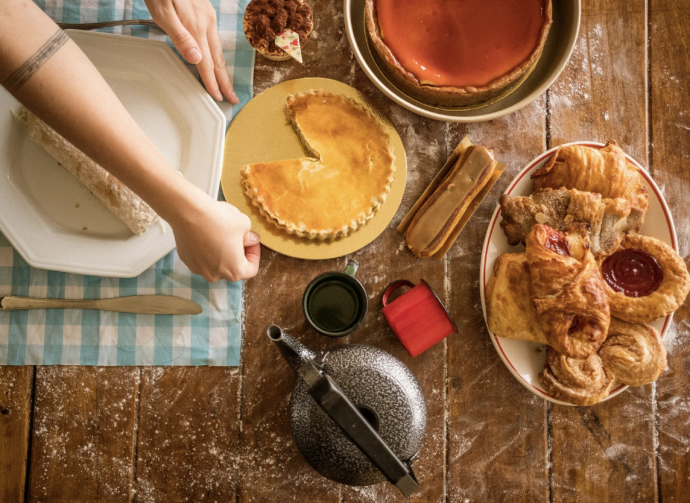8 Simple Baking Tips

There is a lot to learn when you are beginning to learn to bake, and it can be helpful to know a few tips and tricks from seasoned experts to help you along your way. Here we have collected some useful tips that will set you off on the right foot, and make sure that you don’t make the same mistakes that others have made when starting out.
1. Removing Broken Eggshell From Batter
Every baker knows how annoying it is to crack an egg into cake batter or a bowl only to see a few small pieces of shell appear in the batter, too. It can be remarkably hard to fish bits of eggshell out with a teaspoon or any other kitchen implement. Instead, try using the broken half of the eggshell —the sticky interior of the shell will attract the loose pieces and make them easier to remove.
2. How To Roll Pastry For Best Results
When working with pastry, the best advice is to keep everything as cool as possible. This includes the environment (the kitchen and the work surface), any tools (from a rolling pin to your hands), and, of course, the pastry itself. Marble boards are ideal for rolling out pastry because they tend to remain cool.
3. How To Bind Pastry For A Richer Effect
Although pastry is commonly made with water, it is also possible to bind it with anything from sour cream to milk for a different effect. Some bakers swear by a teaspoon of vodka to produce perfect pastry.
4. How To Prevent Shrinkage & Cracking
There are several reasons why pastry shrinks or cracks on cooking, and most concern the overdevelopment of the gluten in the flour. To prevent this from happening, do not overwork your pastry, and always allow it to rest before cooking.
5. Avoid Over-Flouring Surfaces
When rolling out pastry, especially a rich, buttery one, it is tempting to keep sprinkling flour on both the pastry and the work surface to prevent it from sticking. However, whenever you do this, you are unintentionally incorporating potentially significant amounts of flour into your delicate pastry. This added flour could change the structure of the pastry, making it hard and dry, so try to be as frugal as possible when flouring the work surface.
6. Avoid Rerolling
Rolling out pastry is an acquired skill. As you roll it out, pastry might crack and stick, and in those instances you will have to bring it back together and reroll it. Beware, however, of doing this too often. The additional handling creates heat and activates the gluten in the flour. The resulting pastry could therefore become tough and more liable to shrink on baking.
7. How To Keep Pastry Crisp When Using Fillings
Once a pastry crust is blind-baked, it is ready to be trimmed and filled. Placing uncooked fillings, such as cream or crème pâtissière and fresh fruit, directly on the pastry will result in the bottom of the tart case turning soggy. To prevent this from happening, create a protective layer—for example, with jam.
8. How To Transfer Pastry Into A Pie Pan
After you have made and rolled out your pastry, you will have to transfer it from the work surface to a pan. This can be a tricky business, because pastry can break if it is picked up incorrectly. However, the simple method illustrated here will ensure that pastry can be moved quickly and successfully every time.

Where is the illustration for transferring the pie shell to the the dish